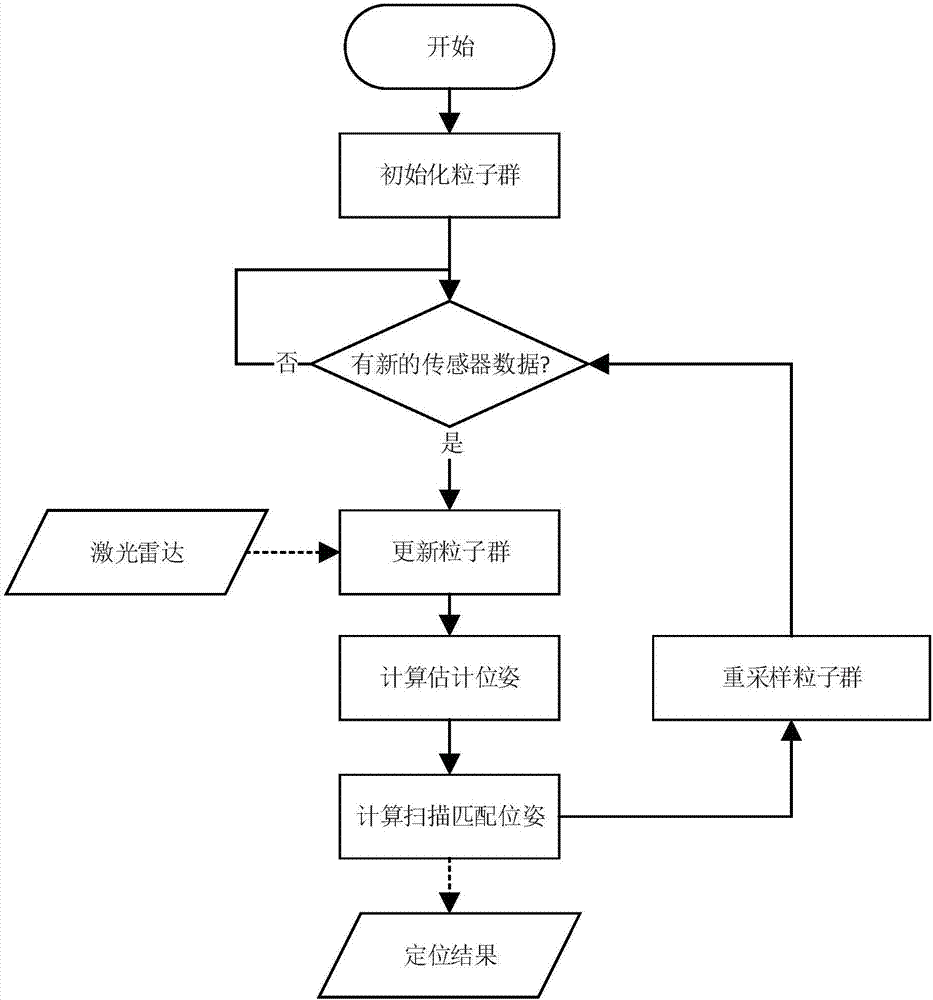Method for autonomously localizing robots on basis of laser radar
A laser radar, autonomous positioning technology, applied in the direction of instruments, electromagnetic wave re-radiation, measurement devices, etc., can solve the problems of difficult to meet the high-precision positioning requirements of automatic inspection of substations, difficult construction of positioning technology, and low positioning accuracy. Improve alignment effect, high-reliability autonomous positioning and trackless navigation, positioning accuracy and positioning convergence speed improvement effect
- Summary
- Abstract
- Description
- Claims
- Application Information
AI Technical Summary
Problems solved by technology
Method used
Image
Examples
Embodiment 1
[0071] The autonomous positioning experiment of the mobile robot lidar in Embodiment 1 of the present invention is shown in FIG. 5 . The positioning experiment was carried out on a grid map with a size of 16.075m×9.9m and a resolution of 2.5cm. It can be seen from Figure 5(a) that a large number of particles are generated near the initial pose estimation (small arrows, the minimum number of particles is 500, and the maximum number is 5000). During the movement of the robot, the particles converge gradually, as shown in Figure 5(b) and Figure 5(c). The big arrow in the figure indicates the running posture of the robot at each moment, and the point cloud is the laser scanning point cloud.
PUM
 Login to View More
Login to View More Abstract
Description
Claims
Application Information
 Login to View More
Login to View More - R&D
- Intellectual Property
- Life Sciences
- Materials
- Tech Scout
- Unparalleled Data Quality
- Higher Quality Content
- 60% Fewer Hallucinations
Browse by: Latest US Patents, China's latest patents, Technical Efficacy Thesaurus, Application Domain, Technology Topic, Popular Technical Reports.
© 2025 PatSnap. All rights reserved.Legal|Privacy policy|Modern Slavery Act Transparency Statement|Sitemap|About US| Contact US: help@patsnap.com



